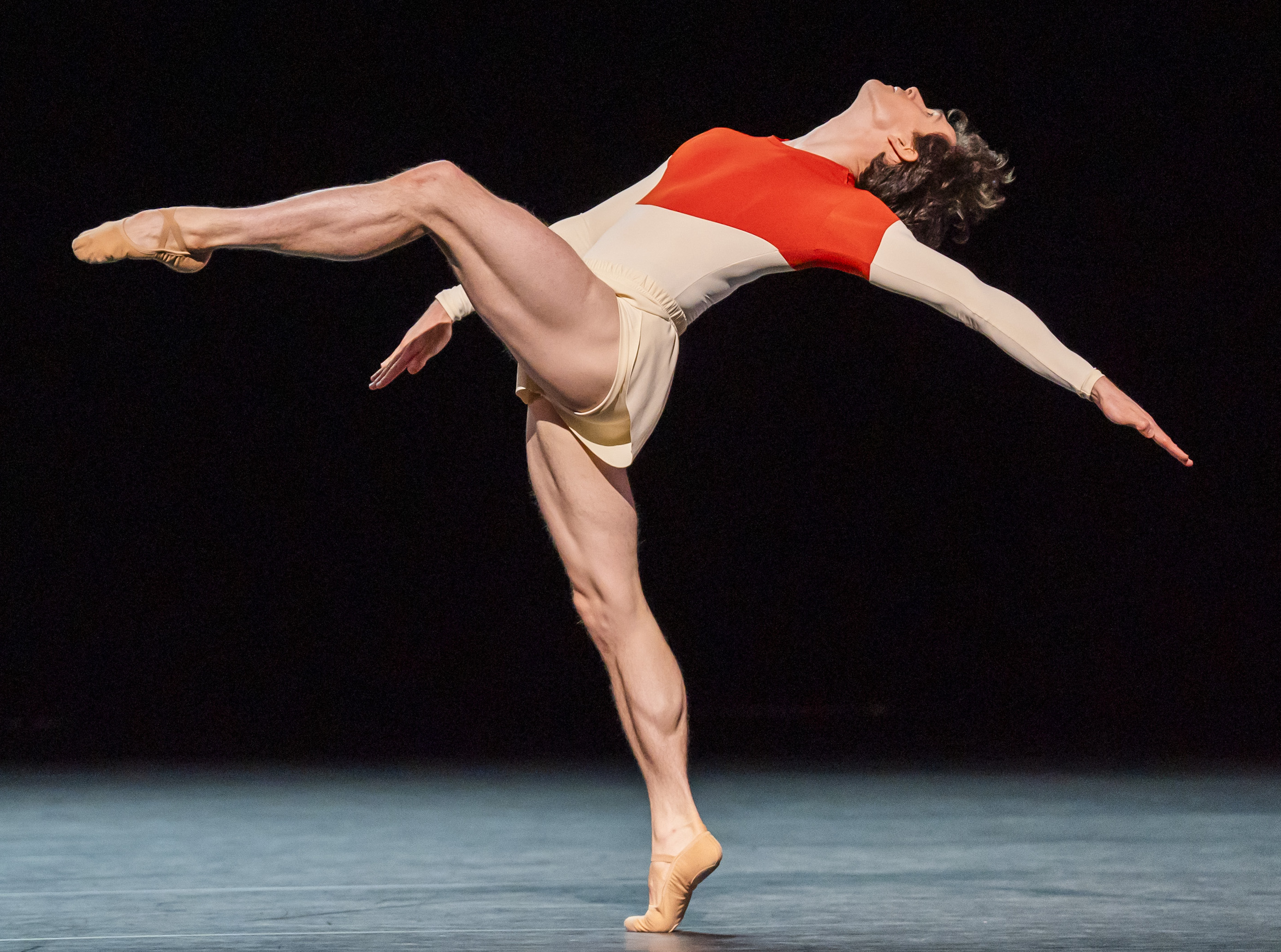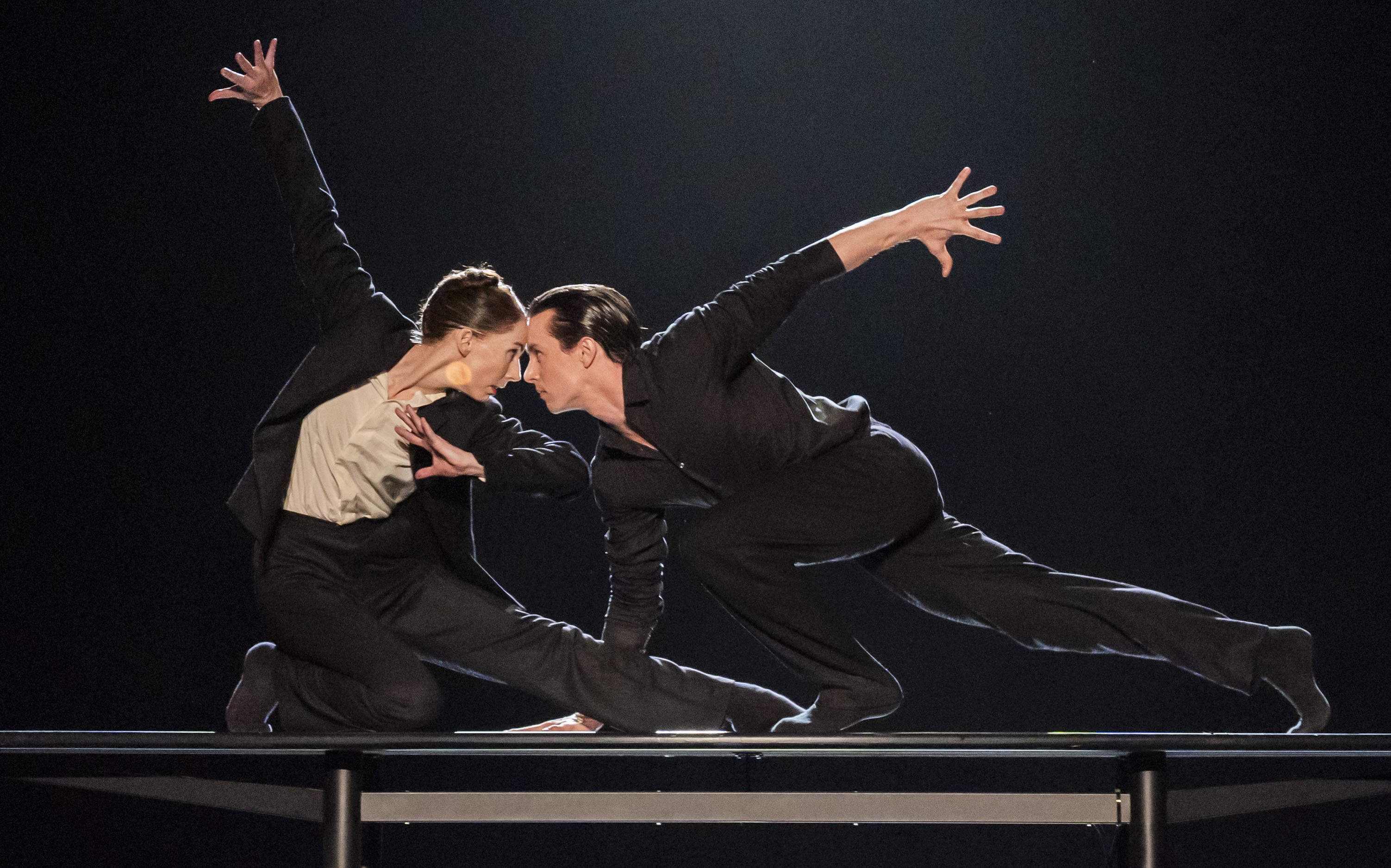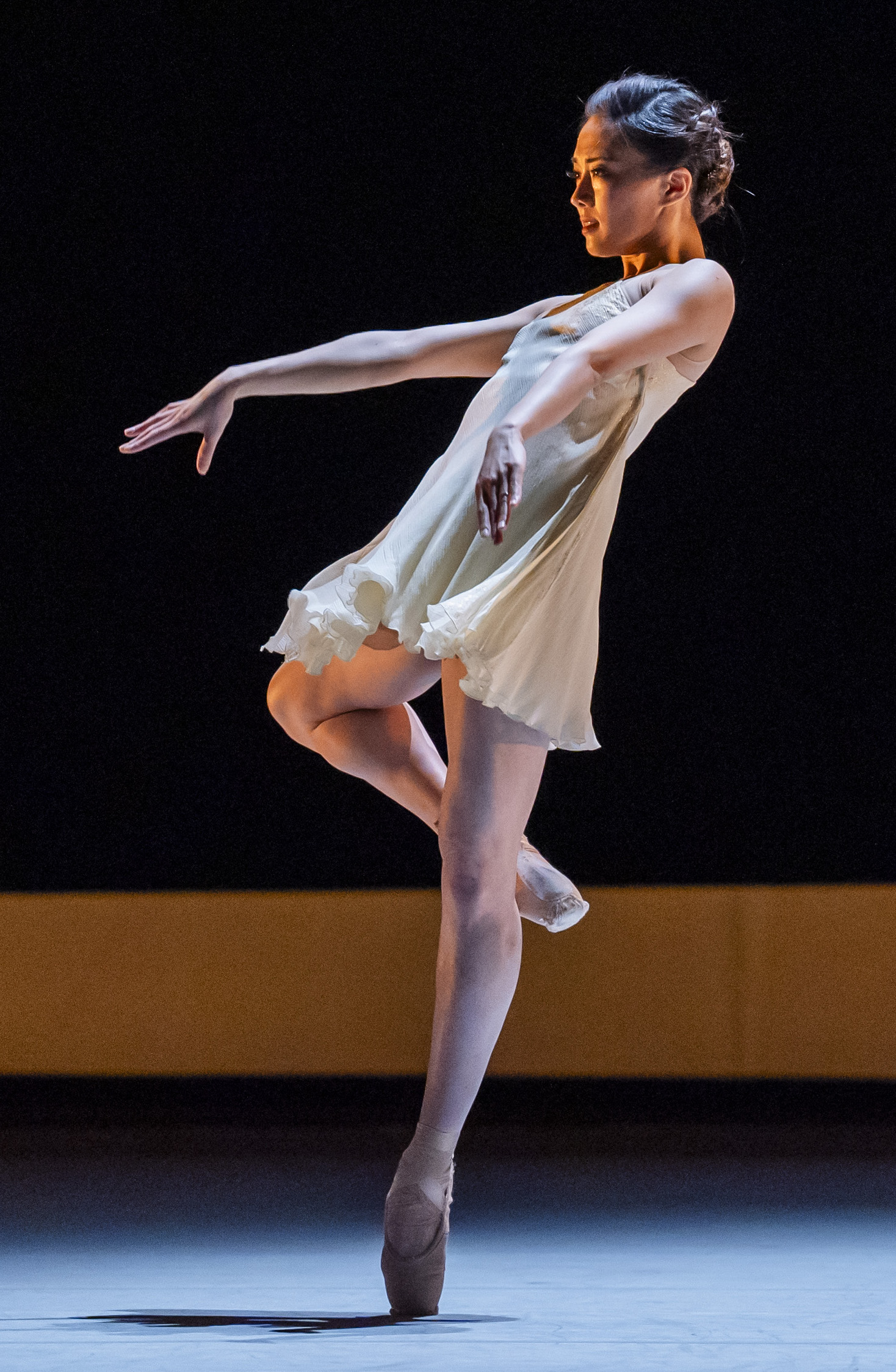In 2022, the American choreographer Pam Tanowitz made a duet on Royal Ballet principals William Bracewell and Anna Rose O’Sullivan, which they performed at the company’s Diamond Celebration. That piece has now evolved into a true gem.
Or Forevermore is Tanowitz at her most larky. In its 30-minute span, it takes many of the conventional pieties of ballet and amusingly but firmly disrupts them. We start outside the ROH’s majestic red curtains, where a spotlight picks out a dancer (O’Sullivan on opening night) in a plush garnet-red tracksuit. A sultry sax and bluesy strings accompany her as she goes through various moves, as if warming up for something more strenuous. Then the score goes more Latin, the curtains part, and Bracewell is there in a black tracksuit, ready to partner her.
This is no normal classical pair. One of O'Sullivan's signature moves is to fall on him en arabesque as he kneels before her; she does the splits across his legs, slides across the floor as if it were ice, mimics his extensions, jumps up to be held by him with her feet tucked up beneath her. Early on, Bracewell kisses her hand, a flicker of a danseur noble, but soon he’s off, sidling along a wall in a skittering series of rapid little heel-toe movements. One of his hands then emerges from the wings, and she leans on it to perform moves of her own. Together they back into the wings, she clutching him with his back to her, then reappear going forward in the same beetle-like pose.
 As the tempo mounts, so does their athleticism, both appearing in shorts and bare legs as a flurry of dancers in two-tone leotards arrive and work in groups or solo around them. The vibe is a gym workout for Team PT, the initials on the back of their tops, even though the choreography is full of balletic excellence, suddenly exploding into scissoring jumps, immaculate spins, chaînés and travelling fouettés: all the steps you might expect, alongside ones you wouldn’t – skipping, running on the spot, bending over and working the arms as if washing clothes in an imaginary tub. The pair at one point suddenly move to sit, one on each side, at the front of the stage, apparently having a breather. They communicate wordlessly throughout, as if testing being partners in the roles they are actually executing. They also directly check out the audience, as do the other dancers.
As the tempo mounts, so does their athleticism, both appearing in shorts and bare legs as a flurry of dancers in two-tone leotards arrive and work in groups or solo around them. The vibe is a gym workout for Team PT, the initials on the back of their tops, even though the choreography is full of balletic excellence, suddenly exploding into scissoring jumps, immaculate spins, chaînés and travelling fouettés: all the steps you might expect, alongside ones you wouldn’t – skipping, running on the spot, bending over and working the arms as if washing clothes in an imaginary tub. The pair at one point suddenly move to sit, one on each side, at the front of the stage, apparently having a breather. They communicate wordlessly throughout, as if testing being partners in the roles they are actually executing. They also directly check out the audience, as do the other dancers.
Key to the piece is Ted Hearne's extraordinary 2014 score, Dispatches, Tanowitz’s starting point when she used sections of it for Dispatch Duet. Here he has expanded it further. In my notes I wrote “music wheezes and rattles like a clanky car” and was delighted to see Hearne marked the original score “wheezing: industrial”. The barrage of sounds, sampling vocals (Stevie Wonder and Erykah Badu) as well as orchestral passages, is never oppressive, though. It’s intriguing, lurching from texture to texture, in a way that allows Tanowitz’s choreography to do the same, constantly on the move. Yet there is a purity in so many of her moves, which Bracewell in particular responds to with his remarkable mix of strength and delicacy, always landing on his mark and never losing his line, his hands and arms wonderfully expressive. By the end, he and O’Sullivan have become a close, adorable partnership, she resting against his shoulder. I can’t wait to see it again.  At the other end of the evening, Crystal Pite’s The Statement returns, one of several pieces the hot Canadian dance-maker has created in a new choreographic language that could perhaps be called “body-synching”, in which the dancers act out prerecorded dialogue using every part of their bodies to project, not just what their character is saying, but the tone of it too. It’s both comic and disturbing.
At the other end of the evening, Crystal Pite’s The Statement returns, one of several pieces the hot Canadian dance-maker has created in a new choreographic language that could perhaps be called “body-synching”, in which the dancers act out prerecorded dialogue using every part of their bodies to project, not just what their character is saying, but the tone of it too. It’s both comic and disturbing.
The first couple we see (Joseph Sissens and Ashley Dean in smart office-wear) are bent in desperation over a long, dimly lit table as the curtain rises. They seem to fear they will be held responsible for a terrible mistake in a business deal, but it really wasn’t their fault things got out of control, they repeatedly intone. A “guy from upstairs” (Calvin Richardson, dressed in black, pictured above with Kristen McNally), with a jumpy female assistant (Kristen McNally), comes to take a statement from them.
Out of this set-up, writer Jonathon Young builds up the psychological pressure as the four try to deny culpability for what has happened, while Pite’s choreography ramps up the dancers’ moves to underline each key word. Their bodies make sudden, exaggerated gestures, along with the dialogue: dropping, contorting, legs shooting out suddenly, heads abruptly swivelling. These characters are tormented by guilt and fear of failure, and their body language so compellingly tells us that, with split-second timing, Owen Belton’s doomy ambient music adding to the portentousness of it all.
 The other two items on the bill present more abstract themes: a buoyant lyricism from Kyle Abraham for the returning The Weathering, a more aggressive style from Joseph Toonga for Dusk, the other premiere of the evening. The Abraham piece employs a troupe of 11, who leap and spring in different configurations, the relationship between two of the men failing to mature the way it looks as if it will, leaving one of them (Joshua Junker) alone onstage for the final moments. But there is an appealing zing and spring to this choreography, in which Liam Boswell and Sae Maeda (pictured right) especially flourished.
The other two items on the bill present more abstract themes: a buoyant lyricism from Kyle Abraham for the returning The Weathering, a more aggressive style from Joseph Toonga for Dusk, the other premiere of the evening. The Abraham piece employs a troupe of 11, who leap and spring in different configurations, the relationship between two of the men failing to mature the way it looks as if it will, leaving one of them (Joshua Junker) alone onstage for the final moments. But there is an appealing zing and spring to this choreography, in which Liam Boswell and Sae Maeda (pictured right) especially flourished.
Toonga’s piece is darker, literally, using a descending lighting rig to form the only illumination onstage, a giant square frame of white light. The women dancers are curiously kitted out in long see-through plastic pants over shorts (not sure why), while the music is eerie and dominated by a plaintive, rich cello that sounds amplified and is overlaid with bells and bird calls. Here, too, a troupe of seven narrows down to a solitary dancer, left moving inside the lowered square of light at its close. The moves are self-battling and writhing, sporadically employing the jerks and stops of body-popping, though Toonga doesn’t feel quite as at home in this mode as he was in his first main-stage piece, the exhilarating See Us! But the dancers pulled out all the stops, the creative teams and musicians too.













Add comment